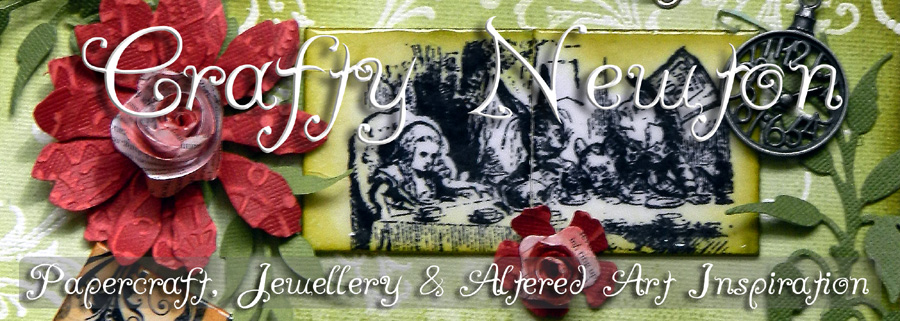Circular Tree Card
If you want to practice using Distress inks, this is a great card design to try. It will work with any background stamp, focal image or nesting die shape; you don't have to use the ones I did.
Working on a craft sheet with the Distress inks makes blending easier and minimises the ink waste.
Resources
Nellie’s Frames MFD005 round 3 circles
Nellie’s Frames MFD018 star wreath
Cart-Us clear stamp Fantasy Tree with birds
Cart-Us clear stamp Bird with branch
Staz–On ink Timber Brown
Distress Ink Vintage Photo, Peeled Paint, Broken China, Scattered Straw, Barn Door, Rusty Hinge, Wild Honey
A4 White card
Brown card
Instructions
- Fold the white card in half widthways. Draw a 12.5cm/ 5” circle with one side overlapping the crease of the card. Carefully cut it out through both layers of card.
- Randomly stamp the branch stamp around the edge of the card front in a series of different distress ink colours: Wild Honey, Vintage Photo and Rusty Hinge.
- Using Wild Honey distress ink and the applicator tool and foam, distress blend the edges of the card as desired, adding some Rusty Hinge if a deeper edge shade is required.
- Die cut a 6cm / 2⅜” circle from white card using the Nellie’s Frames MFD018 star wreath die set. Carefully stamp the fantasy tree on the card using Timber Brown Staz-On ink. Colour the image using the distress inks as required.
- Distress blend around the edge of the die cut circle with Rusty Hinge distress ink.
- Die cut the medium die from the Nellie’s Frames MFD005 round 3 circles set out of brown card. Attach the tree circle to this. Then attach the topper to the card front using sticky foam pads.
It's a post friendly card design too!




.JPG)








